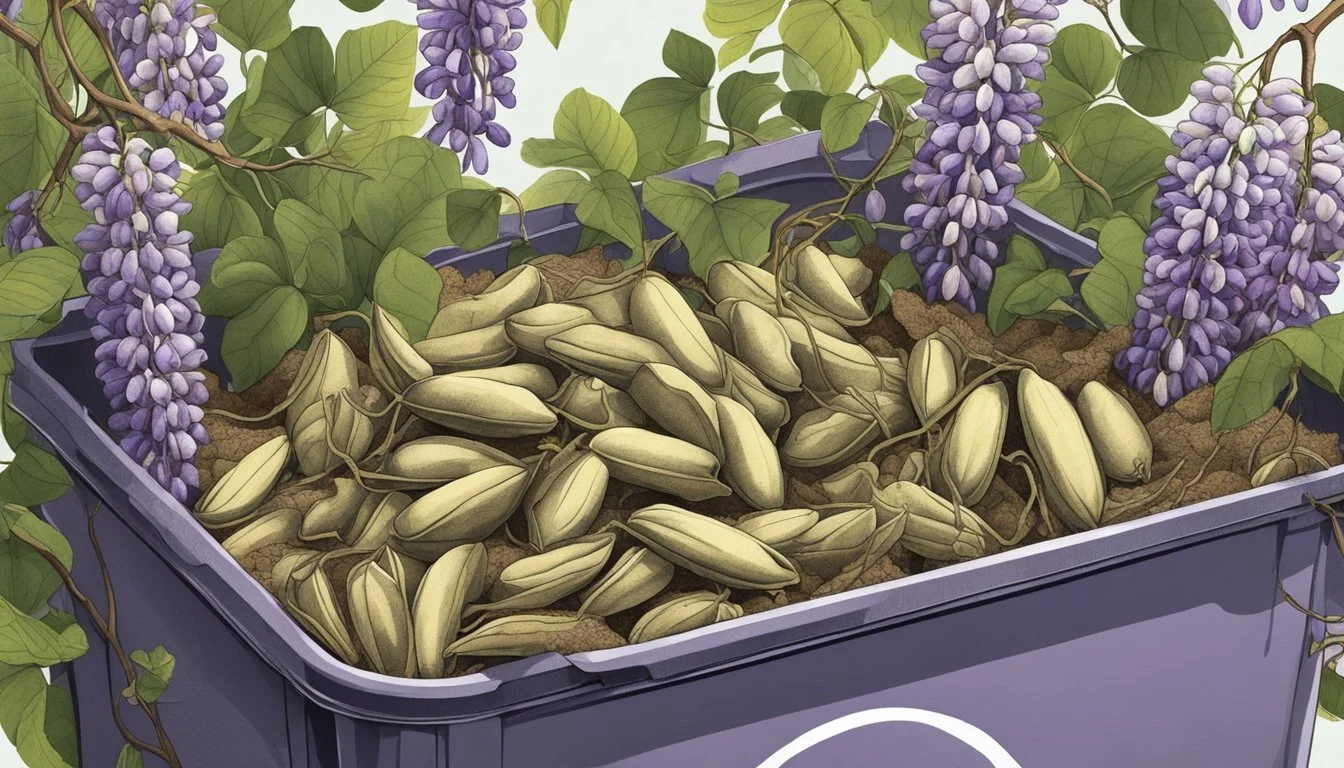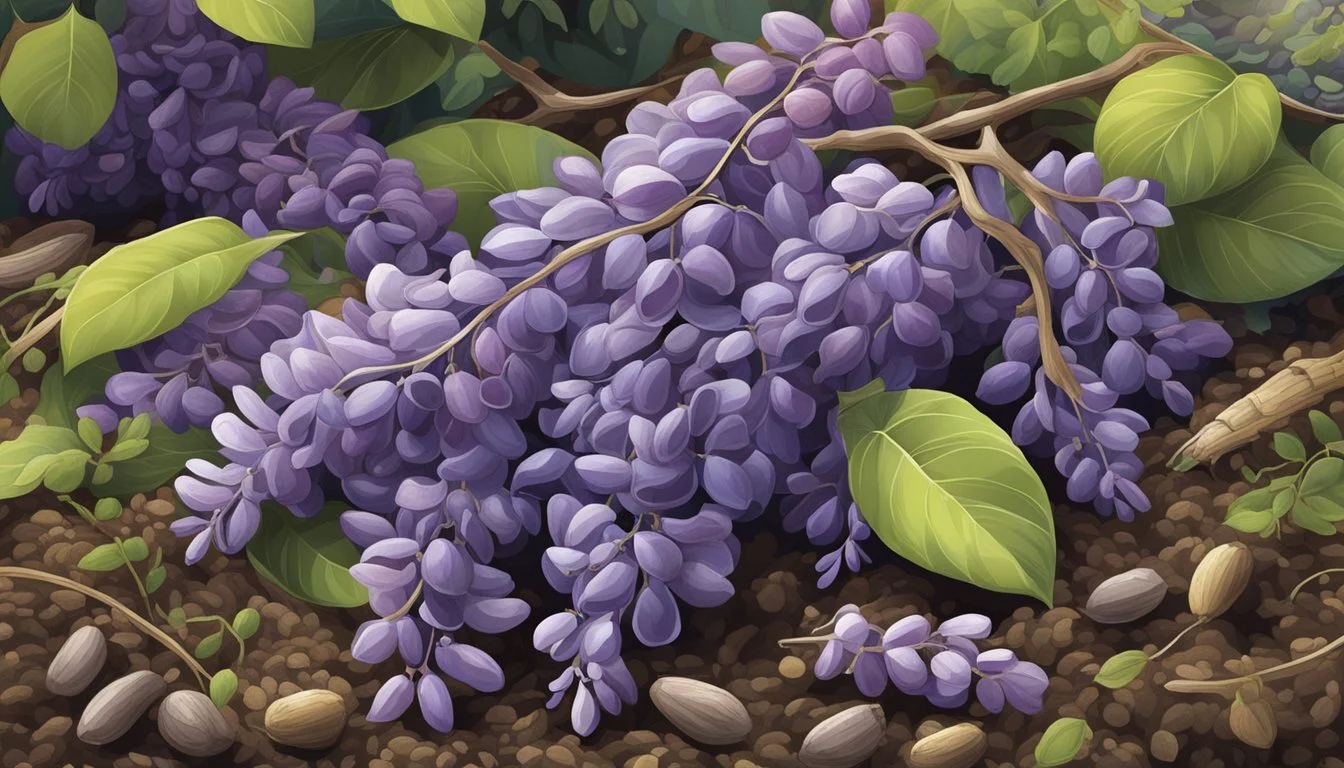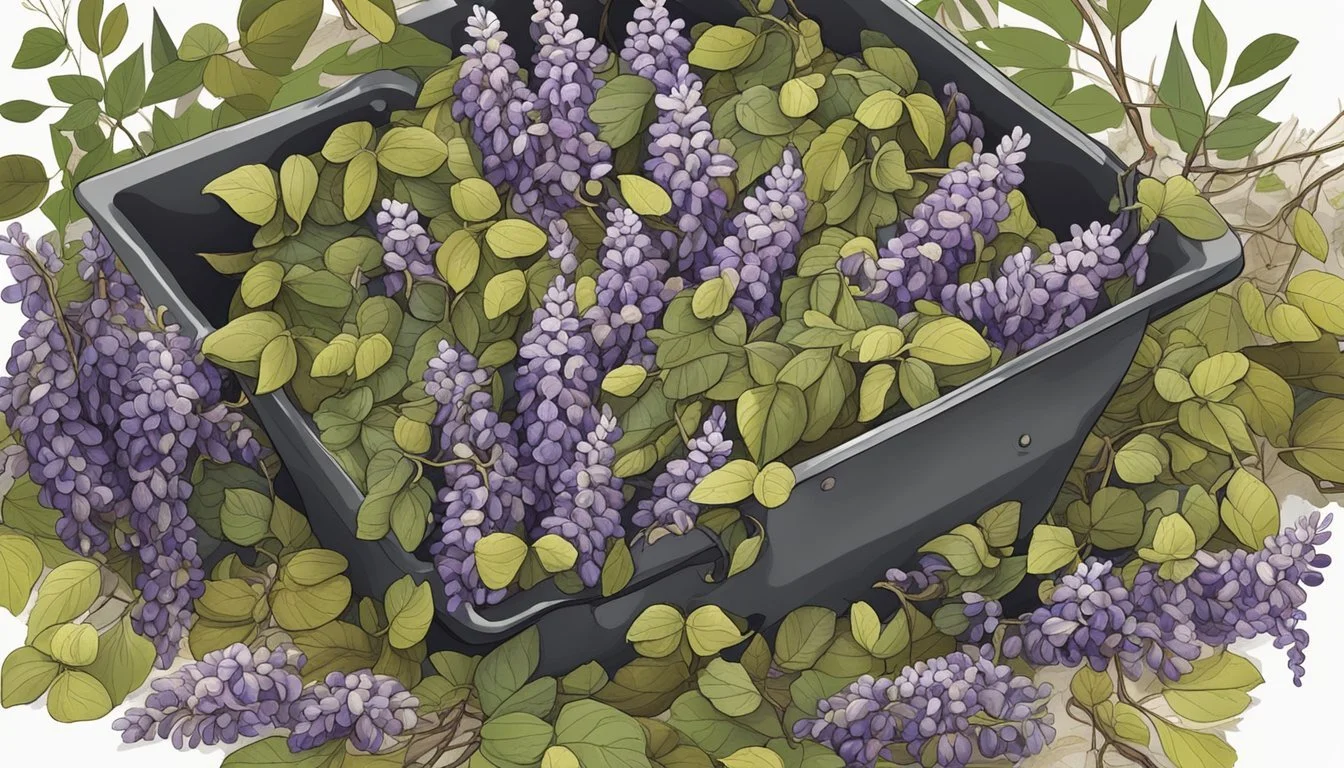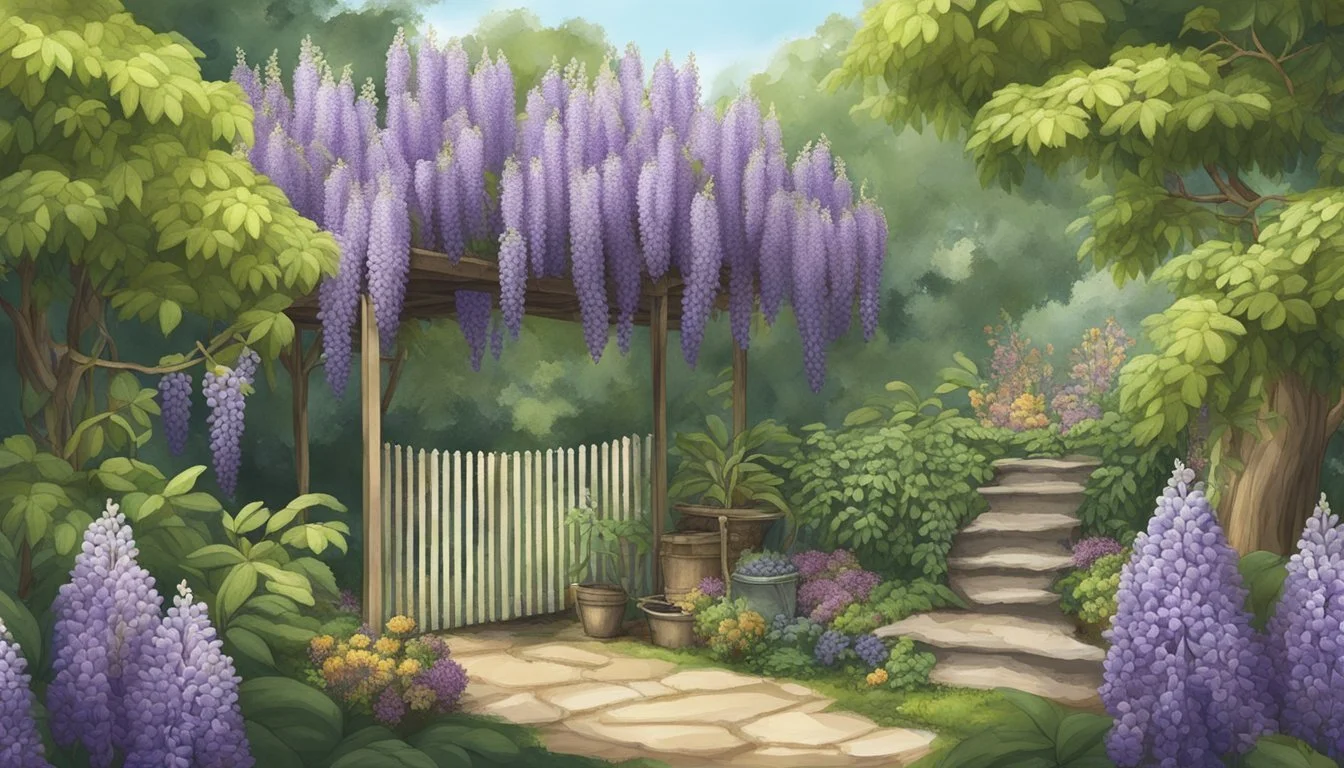Can You Compost Wisteria Pods?
A Guide to Eco-Friendly Disposal
Composting is a practice cherished by gardeners for its ability to transform organic waste into nutrient-rich soil amendments. When it comes to wisteria, a vigorous climbing plant known for its cascading flowers, gardeners often find themselves with an abundance of fallen foliage and pruned offcuts, including seed pods. These hardy pods raise a question among compost enthusiasts: can wisteria pods be composted?
The simple answer is yes, wisteria pods can be added to compost. As with any plant material, they will eventually break down, contributing to the organic matter within the compost pile. However, caution is advised as wisteria seeds have the potential to germinate, which could lead to unintended propagation if compost is spread around the garden. It is best to ensure that the compost reaches sufficient temperatures for an extended period to kill any viable seeds, minimizing the risk of sprouting unwanted wisteria plants.
Understanding Wisteria
Wisteria is a genus of flowering plants that serves as a stunning addition to many gardens. As a member of the legume family, it is distinguished for its vigorous growth and ability to enhance outdoor living spaces with its characteristic blooms.
Species Overview
Wisteria comprises several species, the most renowned being the Asian varieties such as Wisteria sinensis (Chinese wisteria) and Wisteria floribunda (Japanese wisteria), as well as Wisteria frutescens, known as American wisteria. Each species adapts differently to location and climate, with varying flower formations and lengths.
Growth Habits
These long-lived climbing vines can grow up to 30 feet or more in length. They are best supported by strong structures like trellises, pergolas, fences, or trees due to their twining growth habit. Wisteria vines typically require full sunlight for proper growth and flowering.
Seasonal Changes
In spring, wisteria is notable for its prolific blooming, presenting long, pendulous racemes of flowers. As the season progresses to early summer, seed pods may form after the flowers. By fall, leaves usually drop after altering color.
Planting and Care
When planting wisteria, it's essential to choose a location with well-draining soil and full sun to ensure vigorous growth and maximum bloom potential. The soil should be kept moist, especially during dry spells. Annual pruning is critical for maintaining the size of the wisteria vine and promoting blooming.
Propagation
Propagation can be achieved through cuttings or seeds. However, propagating wisteria from seeds is a long process, often requiring over fifteen years to bloom. Propagation from cuttings or by grafting onto a young plant assures flower color and characteristics are maintained.
Potential Issues
Wisteria plants can be invasive if not carefully managed. It's also susceptible to a few diseases and pests, such as crown gall, Japanese beetles, aphids, and mealybugs. Regular monitoring and maintenance can help address common problems before they escalate.
Composting Fundamentals
In the realm of composting, understanding the balance of conditions and recognizing the environmental benefits are critical for success.
Compost Conditions
Compost requires a harmonious balance of organic matter, which entails both green (nitrogen-rich) and brown (carbon-rich) materials. The green components often include kitchen scraps and yard waste, while the brown materials are items like dry leaves, paper, or straw. To break down effectively, the compost pile should remain moist, similar to a wrung-out sponge, but not saturated with water. This moisture is a key agent in the decomposition process. Additionally, the pile should be exposed to sunlight to maintain adequate warmth, which accelerates the breakdown of organic matter. Regular aeration, by turning the pile, and the proper ratio of nitrogen to carbon—approximately 1 part green to 25-30 parts brown—promote efficient composting.
Ideal Conditions for Composting:
Moisture Level: Slightly moist to the touch
Temperature: Warm to activate microorganisms
Aeration: Regular turning to introduce oxygen
Balance: 1 part nitrogen (green) to 25-30 parts carbon (brown)
Benefits of Composting
Composting offers an array of environmental benefits. It transforms waste into valuable mulch and compost, which can enhance soil health and structure. This rich, organic material introduces beneficial microorganisms and provides essential nutrients, such as phosphorus and nitrogen, to the soil. As a result, it reduces the need for chemical fertilizers and helps retain soil moisture, cutting down on water use. Composting also lowers the amount of organic waste that would otherwise contribute to landfill growth, mitigating methane emissions and reducing the carbon footprint.
Advantages of Using Compost:
Enriches Soil: Introduces nutrients and improves soil structure
Reduces Waste: Cuts down on organic material sent to landfills
Conserves Water: Mulch from compost retains moisture in soil
Environmentally Friendly: Diminishes reliance on artificial fertilizers
Wisteria Pod Composting
While wisteria vines are known for their vigorous growth and cascading flowers, their seed pods are a subject of consideration when it comes to composting. Let's explore how to handle wisteria pods when adding them to the compost heap.
Appropriateness for Compost
Wisteria seed pods can be composted, but one needs to ensure that they are dry and brittle to prevent any chance of them taking root. Composting these pods provides a good source of nitrogen to the compost heap, which is beneficial for the microorganisms that break down organic matter.
Preparation for Composting
Before adding wisteria seed pods to the compost, make sure they are adequately prepared:
Dry: Seed pods should be thoroughly dried out to avoid germination.
Cut: Larger pods might need to be cut into smaller pieces to expedite decomposition.
Composting Process
The process of composting wisteria pods involves:
Layering: Mix wisteria pods with a balanced brown-green ratio, ensuring a mix of high nitrogen contents like vegetable scraps with high carbon sources like dried leaves.
Moisture: Maintain adequate moisture levels for decomposition but prevent the compost from becoming too wet, which might lead to mold.
Utilization in Gardening
After composting:
Soil Amendment: Use the compost as a soil amendment to add nutrients and improve soil structure.
Mulch: Alternatively, it can function as a mulch to retain soil moisture and reduce weed growth around plants.
Environmental Considerations
When composting wisteria pods, it is crucial to consider their invasiveness, potential ecosystem impacts, and how they fit into sustainable gardening practices to avoid environmental complications.
Invasiveness and Control
Wisteria, particularly the Asian species such as Japanese wisteria (Wisteria floribunda) and Chinese wisteria (Wisteria sinensis), can be highly invasive, often outcompeting native plants. American wisteria (Wisteria frutescens), however, is less aggressive. Effective control measures for these vigorous vines include:
Monitoring growth: Regular pruning to prevent spreading.
Manage seed production: Removing seed pods before they mature can minimize the risk of unintended propagation.
Seeds that escape into the wild from compost can germinate and cause wisteria to spread uncontrollably, necessitating careful disposal of these materials.
Wildlife and Ecosystem Impact
Wisteria’s impact on local fauna and flora must be assessed:
Birds and insects might utilize wisteria for nesting or pollination, but an imbalance caused by its invasiveness can disrupt these natural interactions.
Toxicity: All parts of the wisteria plant are poisonous, which poses a risk to wildlife that may ingest seeds or other parts of the plant.
Sustainability requires balancing wisteria's value to certain wildlife with the broader potential detriment to the ecosystem.
Sustainable Gardening Practices
Integrating wisteria into a sustainable garden involves careful strategies:
Propagation: Favor cuttings over seeds to maintain desired traits and control overgrowth.
Support structures: Ensure climbing vines like wisteria have suitable trellises to prevent them from overwhelming other plants or structures.
By focusing on non-seed based propagation and regular maintenance, gardeners can prevent wisteria from becoming uncontrollable and ensure it adds value to the garden without harming the local ecosystem.
Conclusion
Wisteria pods can be composted, but with caution. Gardeners must ensure that the seed pods are fully brown and dried out before adding them to the compost heap to prevent any unintentional sprouting. This practice aligns well with environmental sustainability by recycling garden waste back into the soil.
Proper composting involves layering green and brown materials. Wisteria pods, being brown, contribute to the carbon-rich component, balancing the compost's nitrogen levels. They should be mixed thoroughly with green materials, such as vegetable scraps or grass clippings, to facilitate even decomposition.
Composting Tips for Wisteria Pods:
Monitor moisture levels: The compost should be moist but not wet to prevent mold growth.
Break down larger pods: Crushing or breaking apart large seed pods can hasten their breakdown.
Turn the compost regularly: This aerates the pile and speeds up the composting process.
For those concerned about self-seeding, remove seeds from the pods or use a hot composting method that reaches temperatures high enough to kill them. Through these methods, gardeners can safely incorporate wisteria pods into their compost without harming their gardening efforts.
Additional Resources
For gardeners seeking to incorporate wisteria clippings into their compost, the following resources can be invaluable:
Local Gardening Guides: Many regions have localized gardening books and pamphlets that provide specific advice for composting in different climates, which can be crucial for dealing with plant materials like wisteria.
Online Gardening Forums: Platforms such as Reddit's r/gardening offer community-led discussions where one can seek advice from experienced gardeners on composting wisteria.
Agricultural Extensions: University extensions offer science-based guidance on composting and can advise on the compostability of wisteria in your area.
Gardening Workshops: Workshops and master classes often address specific concerns like composting woody plants and can be a direct way to gain practical experience.
When seeking guidance from these resources, it is important to verify that the information is up-to-date and applicable to one's specific gardening zone. Here is a brief list to consider:
Resource Type Recommended Action Local Gardening Guides Check for the latest edition or online updates. Online Forums Look for threads specific to wisteria composting. Agricultural Extensions Contact your local extension for tailored advice. Gardening Workshops Attend sessions focused on composting techniques.
In third-person usage, it should be noted that gardeners must ensure proper composting techniques are applied when working with wisteria, as improper composting may lead to unwanted propagation from seeds or cuttings.







